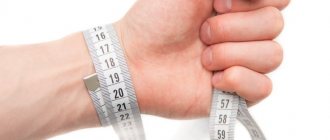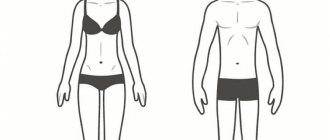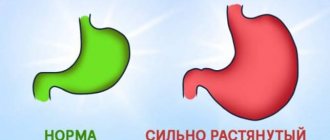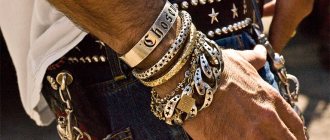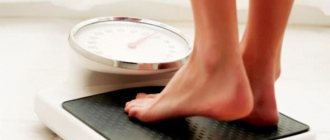Each person's body is unique, it has its own weight, size, proportions. Among all the diversity, body types can be distinguished. All proportions are determined at the genetic level. In very early childhood, you can adjust your body type. When selecting dietary nutrition, it is important to take into account the structural features of the body. The article discusses the mesomorphic body type and presents its distinctive features.
- 2.1 Men
Sheldon classification
William Sheldon (1898-1977) - American psychologist and physician. He is known for his works describing the relationship between a person’s body type, his character and mental disorders. In the forties of the last century, Sheldon analyzed 4,000 photographs of young men. In the photographs, each person was photographed from three positions - front, side, back. When studying the resulting images, the scientist introduced the concept of somatotype.
The term defines the type of body structure, characterized by three indicators : skeletal development, volume of muscle tissue and the presence of subcutaneous fat. Their combination underlies three somatotypes: endomorphic, mesomorphic, ectomorphic.
Sheldon's classification was not revolutionary, as it was based on the typology of the German psychiatrist Ernst Kretschmer, but it had differences. Kretschmer argued that all people can be classified into three clear categories. But by the thirties of the twentieth century it became clear that the theory was untenable - most of it did not fall into the designated categories.
Sheldon's somatotyping differed from the work of his German colleague in that it assumed the existence of not only three main body types, but also many transitional ones. That's why Sheldon's typology has become so popular.
But, despite its wide distribution, the classification of the American scientist also had its opponents. Many researchers disagreed with Sheldon. The main argument of critics was that the body changes over the years, which means the somatotyping system should be modified.
In addition, the technique was not suitable for determining the figure of children and had errors in the classification of female somatotypes. In the end, scientists came to a unanimous opinion - Sheldon’s typology is conditionally suitable for the final assessment of the physique of people 20-25 years old who lead a normal lifestyle and have a normal diet.
Body types. Ectomorphs, Mesomorphs, Endomorphs
Reading time 7 min.
Body types.
Is it possible to get the perfect dream figure? Yes, if your dream matches your somatotype. It is worth getting acquainted with the main types of body structure. This knowledge will allow you to more accurately determine the goal of the exercises, help you choose the right path to achieve it, and can significantly shorten it. When you first encounter these terms, they may seem very scientific and mysterious. However, determining your body type is not that difficult and can be fun. The names of the types are derived from the names of the dominant tissues of the embryonic period: ectoderm, mesoderm and endoderm. The typology you will learn today was developed by American researcher William Sheldon. And he distinguishes three body types: – ectomorphs (117); – mesomorph (171); – endomorphs (711). The numbers in brackets correspond to the test result. After measuring the appropriate proportions in the body structure, the subjects are assessed on three parameters on a scale from 1 to 7. Then, based on the results obtained, they are assigned the appropriate type. The test results are presented in three-digit form, where each number corresponds to the intensity of a given measurement in the person being examined. There are 76 somatotypes in total (theoretically there are 343 = 7). There are three extreme somatotypes (people with only one type of traits), and they can be seen above. The most balanced somatotype is indicated by the number 444.
The three-digit code is most easily interpreted as the severity level of the feature. The first is endomorphic, the second is mesomorphic, and the third is ectomorphic. The scale is common for both men and women. Endomorphic men have many feminine elements in their structure. Before moving on to the evaluation criteria, you can use the so-called slimness index. It is enough to know your height and weight. It is calculated by dividing height in cm by the cube root of weight in kilograms:
Classification according to the slimness index: – dense build (endomorph): men below 39.5 / women below 40.7; – average build (mesomorph): men from 39.5 to 43.2 / women from 40.7 to 44.2; – slender build (ectomorph): males from 43.3 years and older / females from 42.3 years and older. How to determine the type of structure? Below are detailed anthropometric criteria for visual assessment of somatotype according to Sheldon. Below are some tips that will help you classify and find out what the main factors that determine this type are. Criteria for visual assessment of somatotype according to Sheldon’s typology:
Endomorphic type.
The predominance of endodermal tissues in the embryonic period. Head and neck: The head, when viewed from the front, is large and round (weak bones, fat cheeks). Facial features are soft and rounded. The nose is often short, upturned with a rounded tip, and the lips are thick. When viewed from the side, the angle of the chin is obtuse. The neck has a cylindrical outline and the neck is often short. The collarbone area is soft and fatty. The cross section of the neck is equal to the anteroposterior. Back: They are smooth, without clearly defined muscles. The back is wide, in the form of a weak trapezoid, sometimes inverted. Chest: When viewed from the side, deep (inspiratory). The width of the lower chest is greater than the upper (short chest). The abdomen dominates the anterior profile of the body. Shoulders, Arms, Hands: Shoulders are square, high and thick. And the arms are short. The shoulders are massive and thick. In contrast, the forearms are smaller, rounded and tapering. The wrists are small and rounded. The hands are plump, but with small bones. Fingers are short.
Abdominal part of the body: The abdomen is large and convex, without any muscle contours. The anteroposterior section predominates over the transverse section. Sometimes there are hanging folds of fat on the abdomen. Usually there is no waist with a wide, high and slightly defined waist. The pelvis is wide with large fat pads on the sides of the thighs. Adults do not have lumbar curvature. Large rounded buttocks and disappearing gluteal folds. Lower limbs: Hips dominate. The lower limbs are short, large and soft in relation to the body. Hips touch heels together. Subtle outlines of bones. The curves of the calves are outwardly convex, and the shins are small and round. Legs are thin-boned and fatty. The ankle is small and rounded, and the toes are short.
Mesomorphic type.
The predominance of mesodermal tissues in the embryonic period. Head and neck: The head and face of the mesomorph are massive and muscular. The head shape is square or oblong. The face is large, the cheekbones are massive, with a large wide nose of different lengths. The angle of the chin is sharp, the chin is strong, square, like the entire lower jaw. The neck is massive, muscular, pyramidal or trapezoidal, in cross section larger than the anteroposterior. Back: It is wide in an inverted trapezoid shape with a strong muscular shape. The shoulders are wide, the spine is s-shaped. Chest: It dominates the flat abdominal muscle. She is muscular and deep. The width of the lower part of the chest is approximately equal to the upper one. The muscles are thick and strong. The chest is long compared to the belly. Shoulders, Arms and Hands: Shoulders: Broad, muscular, often sloping. Muscles highlighted: deltoids, biceps and triceps. The forearms are almost the same thickness as the shoulders. Clear vascularization. The arms are square and strong, and the wrists are bony and massive.
Abdominal part of the body: The abdomen is compact, often with clearly defined muscles. Low waist, muscular and distinct, different widths. Lumbar lordosis is also low and pronounced. In this part of the body, the anteroposterior section predominates. The pelvic muscles are massive - the buttocks are muscular, concave from the side, with pronounced gluteal folds. The inguinal lines are clear. Lower limbs and feet: The bones and joints are massive, the thighs and calves are strongly muscled. The lateral surfaces of the thighs are emphasized. The ankles are thick and the feet are large, bony, with prominent toe joints. The transverse size of the lower limb is larger than the anteroposterior one.
Ectomorphic type.
The predominance of ectodermal tissues in the embryonic period. Head and Neck: The face is quite small, slender, with fine bones and features. The nose and mouth are also thin. Head with a small thick layer and small muscles. The angle of the chin is sharp, the structure of the jaw and chin is delicate. You can also specify. The neck is long, thin and inclined forward. Sharply defined collarbones. The cross section is equal to the anteroposterior. Back: Bony, slightly muscular back with often prominent shoulder blades, narrow and varied in shape. Chest: The chest most often dominates the slightly concave belly, but can also be slightly arched. It is shallow, flattened, with modest muscles. The width of the lower chest is usually less than the width of the upper chest. The body is short and the chest is long to medium. The aperture area is simple. Shoulders, Arms and Hands: Limbs slightly muscular, with thin, sinewy muscles. The shoulders are narrow, bony and pointed. They often lean forward. Thin and elongated bones, especially in the forearms. The wrists are thin and bony. The hands are narrow, with thin and thin fingers, sometimes with convex joints.
Abdominal part of the body: The abdomen is small, not muscular, sometimes convex. Narrow waist with weak muscles. Adipose tissue is very modest or absent. The pelvis is flat and narrow. Protruding anterior and superior iliac spines. Lumbar lordosis is high. Poorly muscled buttocks (flat and dry). Lower limbs and feet: The lower limbs are long in relation to the body with clearly long legs. Weakness of the muscles in the thighs and calves - the gap between the thighs when the feet are pressed together. The shins are often stringy. The bones of the lower extremities are thin, the joints are small, the knee joints are only sometimes widened. Narrow and thin ankles and long slender feet, sometimes with reinforced toe joints.
What is easiest to notice in people with this body type:
The endomorphic type is characterized by softness and roundness of shape. Such a person has the ability to accumulate fat. The size of the body is larger than the limbs. Stocky man. The mesomorphic type is athletic, with a strong skeleton and strong muscles with tense joints, especially the lower extremities. These people have thick skin due to connective tissue. Beautiful person. This is the most proportional body type. It easily builds muscle tissue. The ectomorphic type has the advantage of being slim and slim. The limbs of these people are long, the pelvis and shoulders are narrow. We may associate this body type with tall people, but remember that this body type can be distinguished in shorter people. Low level of muscle tissue. Or rather, she never had episodes of obesity. She has a hard time gaining weight. Has a predisposition to endurance. It is worth remembering here that somatotypes are often mixed. If you found your characteristics in the two descriptions above, it is quite possible that you are a mixed type. It is also worth noting that, for example, an endomorph may be a thin person, but morphologically, even with severe underweight, he will reveal features characteristic of this group.
Unfortunately, we can also conclude that nature is unfair, because it will not be as easy for an ectomorph to build muscle as a mesomorph, and an endomorph must constantly control the caloric intake of food in order to keep the body in shape. Regardless of what type you are, clearly define your goal, take into account whether the dream is achievable with your somatotype and get to work.
Characteristics of the ectomorphic type
Features of the body constitution:
- equal ratio of the width of the pelvis and shoulders;
- short body and disproportionately long limbs;
- thin bones;
- low content of subcutaneous fat deposits;
- underdeveloped muscles;
- narrow thoracic region;
- weak joints and poorly stretched ligaments.
Women with this type of figure stand out for their thinness and slenderness. The muscles are poorly expressed, angular outlines predominate in the body. As a rule, most female models are ectomorphs.
The character strengths of people with such a figure include logical thinking, a constant desire for new knowledge, and systematization of surrounding processes. Therefore, ectomorphs can reveal themselves in those activities that require attention, analysis, organizing information, and working with technical documents.
People with an ectomorphic body type find it difficult to gain muscle volume, so it is advisable for them to abandon aerobic training and devote all their attention to regular strength training with weights. It is recommended to adhere to the following principles:
- Duration . Due to the small reserve of muscle endurance, ectomorphs need to train for no more than 1.5 hours. If you load your muscles for longer, the opposite effect may occur: stopping progress and losing your already low weight.
- Frequency . The number of visits to the gym largely depends on the person’s work. If your work activity involves heavy physical activity, then you should train 2 times a week; if not, 3 times.
- Training methodology . The basis of the program is strength exercises: squats, deadlifts, bench press. It is advisable to train large muscle groups no more than once a week. Number of approaches and repetitions: 3–4, 8–10.
An important factor for success in gaining weight is rest. Ectomorph muscles take a long time to recover, so pauses between training elements should be from 2 to 3 minutes, and breaks between classes should be at least a day. On recovery days, you need to get enough sleep and, if possible, minimize physical activity.
One of the reasons that prevents an ectomorph from gaining weight is a high metabolism. Therefore, food “for weight” should be high in calories. Recommendations:
- The basis of the menu is complex carbohydrates (50% of the entire diet). These products include: millet, rice, oatmeal, buckwheat, whole grain bread, premium pasta.
- The ratio of proteins and fats is approximately in equal proportions - 25% of the entire menu.
- Fractional diet. You should eat 5-6 times a day, every 2-3 hours.
The recommended calorie intake for male ectomorphs is 3000–3300 kcal/day, for girls — 2200–2400 kcal/day. Gainers and creatine can be used as a dietary supplement.
Famous ectomorph bodybuilders: Arnold Schwarzenegger, Frank Zane, Flex Wheeler, Sue Gafner.
Training programs and features
Positive results are achieved quickly. The main principle at the very beginning of the training process is alternating various exercises, from low intensity to high load.
An example of a mass training program for a mesomorph:
- The first day is to work with light weights, but with a large number of repetitions.
- The second day - a small number of repetitions, working with sufficient weight.
- Day three – high reps, light weight training.
It's best to use a variety of exercises. This will allow you to achieve the best effect.
Split system option:
- Upper body workout (12 reps, 3 sets).
- Pumping the lower body (20 reps, 3-5 sets).
It is important to alternate strength training with exercises to gain muscle mass. A good scheme: 6 weeks of strength training, 6 weeks of training to increase mass. It is important not to forget about rest days.
A mesomorph can include aerobic exercise in the process. The result is dry muscles. Duration – half an hour (2-3 times a week). Cardio exercises are a way to create a beautiful, sculpted body. Correctly determining your body type is necessary to select a competent training regimen and achieve your goals.
Characteristics of the mesomorphic type
Features of the body constitution:
- the shoulder girdle is much wider than the hips;
- proportional structure;
- strong bones;
- minimal presence of subcutaneous fat;
- well developed muscles.
Mesomorph women have a dense physique, and the volume is formed mainly due to muscle tissue, rather than fat accumulation. The circumference of the chest and hips is approximately the same, the waist is narrow. Overall, the figure resembles an hourglass - the most desirable silhouette among the fair sex.
Distinctive character traits of the mesomorphic type are self-confidence, courage, adventurism, assertiveness, and the desire for leadership. Therefore, such individuals feel good in leadership positions, in business, and in professional sports.
People with a mesomorphic physique are predisposed to strength training. They easily gain muscle volume and increase strength. Features of the training:
- The basis of the classes are weightlifting exercises performed with large weights. It is recommended to supplement the basic elements with 3–4 insulating elements.
- Due to the rapid adaptability of muscles, a mesomorph must regularly change the principles of his training: the number of approaches, weights, angles of performing elements, duration of training, number of sessions per week.
- To increase muscle volume, mesomorphs should limit long-term aerobic exercise. It is allowed to combine strength exercises with 1-2 intense runs per week. Such training will help get rid of subcutaneous fat and will not interfere with muscle growth.
- The number of classes per week is 3–4. There should be recovery days between workouts. Otherwise, there is a high probability of developing overtraining.
The preferred training structure for mesomorphs is three or four-day splits with the distribution of large muscle groups into separate classes.
People with a mesomorphic body type have a fairly high metabolism, which allows them to absorb large amounts of protein foods. Basic nutritional recommendations:
- Consumption of 2 g of protein per 1 kg of body weight.
- The carbohydrate content in the diet should be selected individually in each case. Experienced athletes recommend starting with 3 g per 1 kg of body weight.
- Fats should be reduced to a minimum (0.5 g per 1 kg of athlete’s weight).
The required caloric content of the mesomorph menu is 3000–3200 kcal/day. Whey isolates, amino acids, and vitamin complexes can be used as an additional source of nutrients.
Famous mesomorph bodybuilders: Phil Heath, Dexter Jackson, Kai Greene.
Training for mesomorph
- Since mesomorphs gain muscle mass easily, workouts can be done in a muscle-building mode of 8 to 12 repetitions.
- If the goal of training is relief, reducing fat mass, then you can work in endurance mode for more than 12 repetitions.
In both cases, a mesomorph will not need much effort and time to achieve a good result.
Mesomorph program for a week
Day 1 (legs, shoulders)
- Hack squats with a wide stance.
- Leg press with medium feet.
- Deadlift with a barbell.
- Hyperextension with a load.
- Bench press.
- Army press.
- Bent-over dumbbell flyes.
- Shin sitting.
Day 2 (back, chest)
- Bench press.
- Dumbbell press at an angle.
- Reduction of arms in the simulator.
- Lever rod.
- T-bar.
- Bent-over dumbbell row.
Day 3 (biceps, triceps)
- French barbell press.
- Extension of arms from the lower block from behind the head.
- Bent-over dumbbell extension.
- Curling your arms in a biceps machine.
- Lifting the barbell with a reverse grip.
- Alternating arm curls with dumbbells.
Characteristics of the endomorphic type
Features of the body constitution:
- wide hips and shoulders;
- massive, overweight build;
- relatively short limbs;
- well-developed muscles;
- excess subcutaneous fat.
Endomorph women have a full figure, short legs and weakly defined waistlines. They have excess subcutaneous fat, which is deposited mainly in the thighs and buttocks. Outwardly, this physique resembles a pear.
By nature, endomorphs are friendly, kind people with a low level of aggressiveness. They make acquaintances easily, feel great in a team, and love communication. It is difficult for such people to force others to do anything, so positions related to stress and personnel management are not suitable for endomorphs. It is best for this type to engage in creative professions.
Having a high percentage of subcutaneous fat, endomorphs should focus on aerobic training aimed at losing weight. A combination of moderate cardio exercise and weight training in the fitness room is allowed. Recommendations for training:
- Use medium weights for high reps (12-15).
- The duration of the training can be up to two hours. This is necessary to make the muscles “burn”, which will allow the desired relief to be formed.
- Insulating loads must be added to the base elements.
The recommended number of classes for an endomorph is 4–5 per week. This will help speed up your metabolism.
The main problem of the endomorphic type is slow metabolism. Intensive training alone will not be enough to “accelerate” it; an appropriate diet is necessary. Nutrition tips:
- Fractional menu - 5-7 meals, in small portions.
- Consumption of 2–3 g of protein per 1 kg of body weight.
- Reduce fat in the diet to 10–15%.
- Refusal of all sweet foods, preference for complex carbohydrates (rice, buckwheat, porridge, pasta, whole grain bread).
- Using vegetable salads instead of starchy side dishes.
The calorie content of the diet should be lower than the “energy expenditure” during training. Selected personally. To do this, the athlete determines a menu for himself for 6 weeks. If at the end of the period it was not possible to lose at least a little weight, the diet is adjusted.
Famous endomorph bodybuilders: Jay Cutler, Steve Davis, Evan Centopani.
Famous mesomorphs
Male examples:
- Arnold Schwarzenegger
- Sylvester Stallone
- George Clooney
- Bruce Willis
- Andre Agassi
- Mark Wahlberg
Female examples with mesomorphic characteristics:
- Sarah Jessica Parker
- Tina Turner
- Jerry Hall
- Jennifer Garner
- Angela Bassett
- Gabriel Reese
- Anna Kournikova
- Madonna
- Yasmine Le Bon
- Gloria Estefan
- Halle Berry
Advantages of mesomorphs
Possessing the qualities of a mesomorph is a big advantage, because... on its basis great results can be achieved. Mesomorphs don't have to worry too much about what they eat because... they can quickly and relatively easily gain muscle mass and lose excess weight. This combination allows the mesomorph to achieve a fantastic body level. However, the ease with which you lose fat is the same with which you gain it. Janet Jackson is a great example of someone who struggled with weight fluctuations, but took the right path, lost weight relatively quickly, looks incredible and boasts amazing abs.
Mesomorph training and nutrition plan
Looking at photos of mesomorph men and women, who wouldn't want to be a mesomorph? Although both mesomorph men and women have an inherent genetic bonus in the sense that they find it easy to stay lean and toned, they tend to lack the motivation to lose weight and believe they can achieve anything with minimal effort. However, bad habits eventually take their toll!
Mesomorph women need to focus on losing weight, reducing their waistline (like Halle Berry!) through cardio exercises and simply sculpting the contours and curves of their figure. The goal is to create a form. Mesomorph women should focus on powerful cardio training and extreme loads. For those who are concerned about excessive muscularity in their legs, it may be advisable to do exercises to slim down your calves or to slim down your thighs. With regular exercise, this body type tends to sculpt and form well-defined muscles more easily than ectomorphs or endomorphs.
Mesomorph men need to focus on keeping their body fat levels low, as many mesomorphs are prone to weight gain, although they lose it quite easily. When mesomorphs lose fat, they have excellent characteristics due to their natural muscles. Add strength training to your life and your body will be second to none.
How to determine your somatotype?
As a rule, there are few pure somatotypes in nature. The majority of people have mixed constitutions, for example, endomesomorph or ectoendomorph. Therefore, each person will be able to find in himself different traits of all three types.
For self-assessment, a simple examination and correlation of appearance with the characteristics of each somatotype are most often used (see above).
You can also use the Solovyov index. To determine, measure the circumference of your wrist with a centimeter. For ectomorphs, the measurement result should be less than 18 cm (women - less than 15). For mesomorphs - 18-20 cm (women - 15-17 cm). For endomorphs - more than 20 cm (women - more than 17 cm).
Diet for weight loss
The problem with loving sweets is only partly its high calorie content - a spoonful of sugar contains about 15 kcal, which is not that much. However, after digestion of simple carbohydrates, the level of glucose in the blood first rises sharply, then sharply decreases, giving rise to a “false” feeling of hunger.
In turn, to utilize glucose, the body produces the hormone insulin. Regular consumption of fast carbohydrates against the backdrop of a sedentary lifestyle leads to an excess of insulin - and a decrease in sensitivity to it. As a result, type 2 diabetes mellitus develops.
We recommend reading: Crossover One-Arm Press
Trying to lose weight, endomorph women often go on a weight loss diet - abruptly refusing to eat. However, this leads to an increase in the hormone ghrelin - and an uncontrollable feeling of hunger. A separate problem is posed by leptin, a hormone produced in internal fat.
Proper nutrition for endomorphs
A successful nutrition strategy for endomorph women is to constantly maintain a low-carbohydrate diet, which consists of avoiding baked goods, sweets and other fast carbohydrates as much as possible, increasing the amount of vegetables and fiber in the diet, as well as minimizing saturated animal fats.
Also, periodic fasting days and intermittent fasting - for example, the 16/8 diet (if there are no contraindications) - will also benefit your metabolism. This will not only improve glucose metabolism and reduce sugar cravings, but will also teach the body to naturally use reserve reserves and fat deposits.


